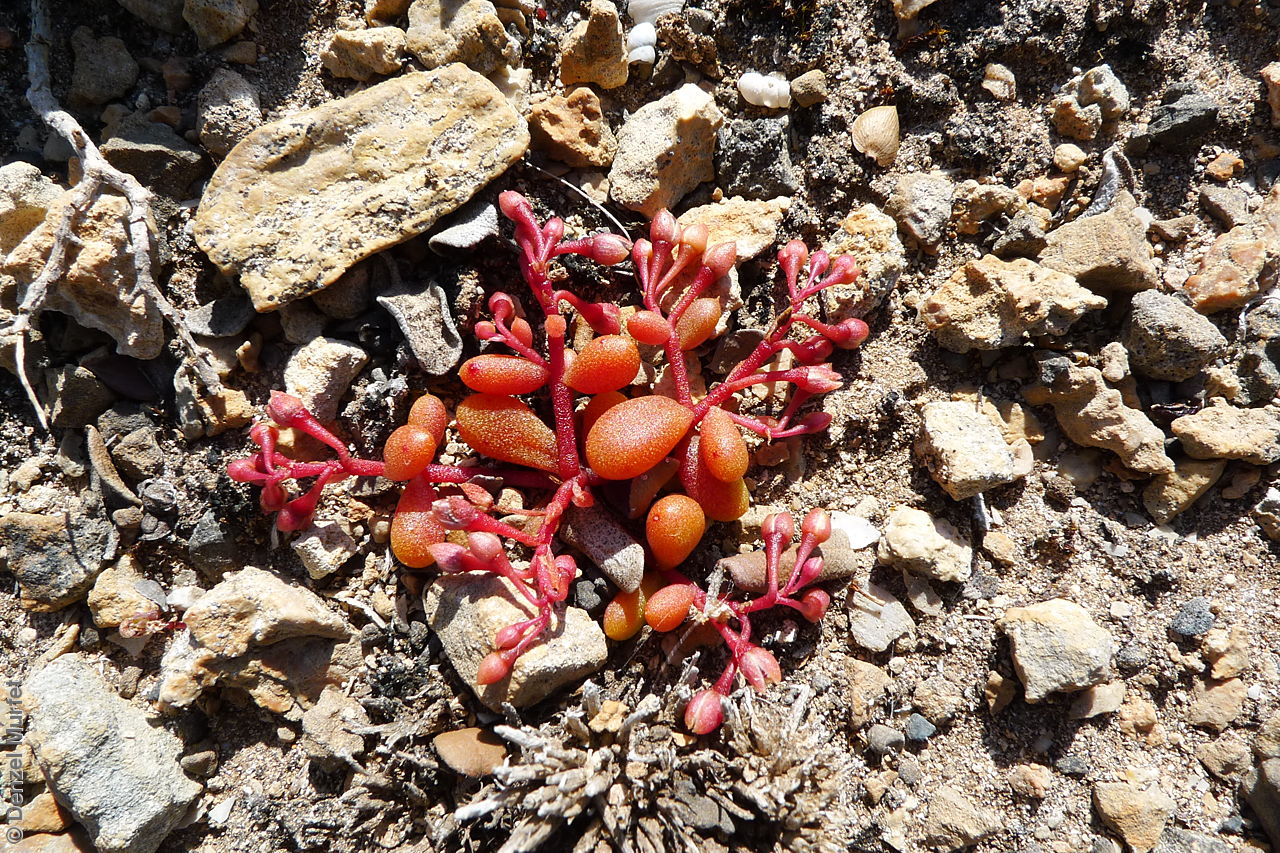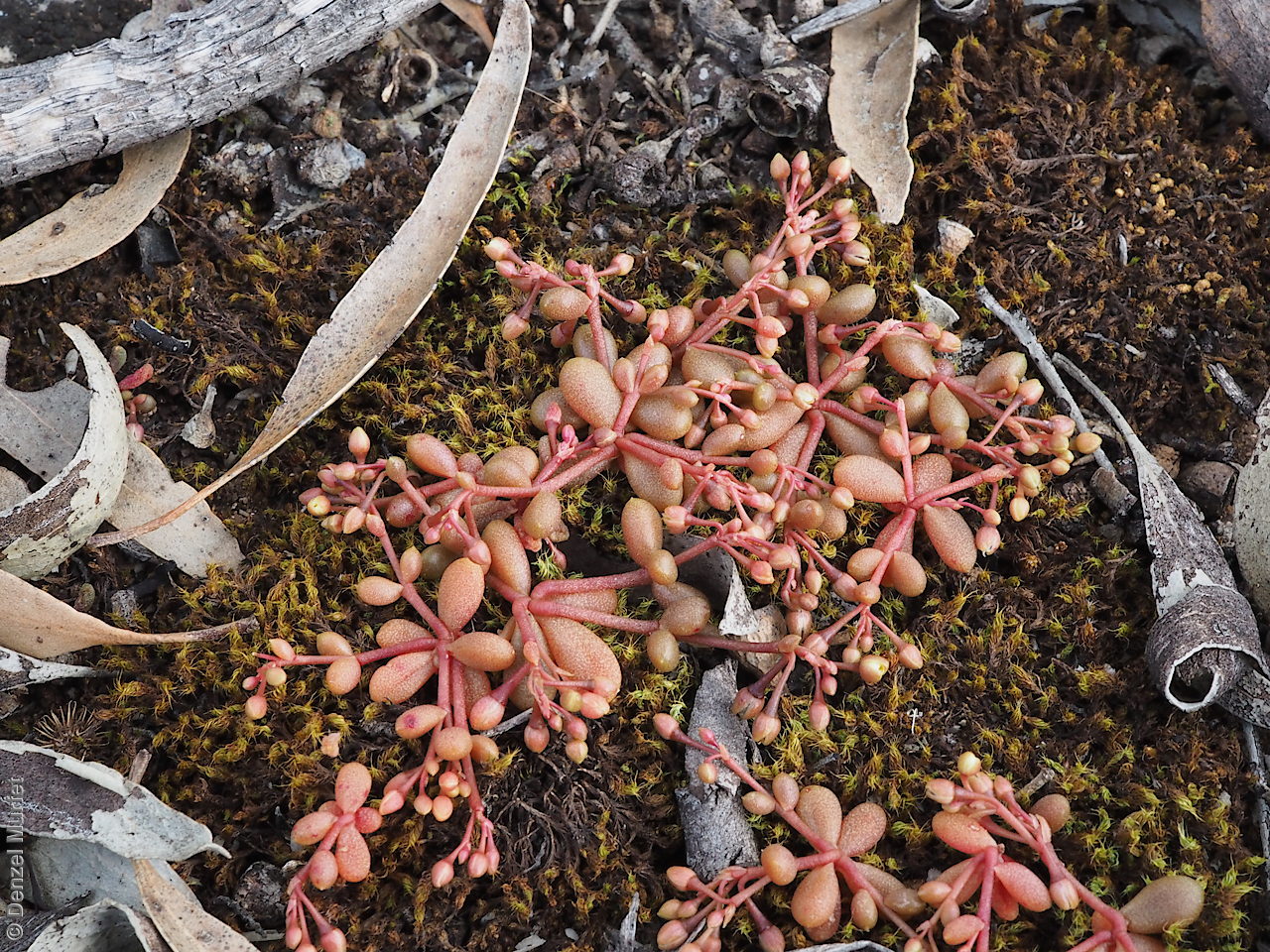















Botanical art
Prior names
Parakeelya sphaerophylla
Common names
Bead Purslane
Etymology
Calandrinia named after Jean-Louis Calandrini (1703-1758), a Swiss scientist, professor of mathematics and philosophy. Sphaerophylla from the Greek 'sphaira' meaning a ball and 'phylla' meaning a leaf, referring to its globular succulent leaves.
Distribution and status
Endemic to South Australia and known only from a few collections from the Nullarbor and the Eyre Peninsula. Native. Very rare in South Australia.
Herbarium regions: Nullarbor, Eyre Peninsula
AVH map: SA distribution map (external link)
Plant description
Minute prostrate or erect annual herb to 2 cm high. Leaves basal and on flower stems; sessile, obovoid, to 5 mm long and 3 mm wide, fleshy, reddish colour. Inflorescence short loose panicles with small white to pale-pink flowers. Flowering between September and November. Fruits are red-brown ovoid capsule to 2.5 mm long with 3-valves.ovoid, as long as the sepals or slightly longer. Seeds are shiny dark brown to red-brown reniform-ovoid seed to 0.5 mm diameter, with a tuberculate surface. Seed embryo type is peripheral.
Seed collection and propagation
Collect seeds between October and December. Collect mature capsules that are turning a red-brown colour and contain dark seeds. Place the capsules in a tray and leave to dry for one to two weeks. Then rub the capsules gently by hand to dislodge the seeds. Use a sieve to separate the unwanted material. Store the seeds with a desiccant such as dried silica beads or dry rice, in an air tight container in a cool and dry place.